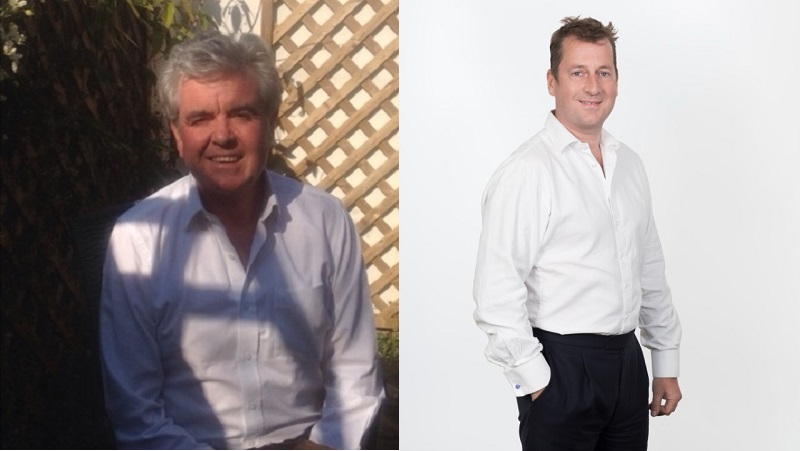Since A&J Wealth Management was established 34 years ago, it has gone from a one-man band turning over just £35,000 a year, to a firm with a staff of 30 across four locations, generating revenue of £4.9m.
The firm was born out of founder and managing director Gareth Jones’ (pictured left above) desire to deliver a high-quality and varied investment service to end clients. In 1985, Jones was working as a product adviser for insurer Equity & Law, now part of Axa, selling pension and investment products. But he felt the end client was receiving “bog standard” investment management services and missing out on a plethora of options in the wider market.
“I left Equity & Law at age 27. I had good connections with accountants and solicitors who also wanted better client outcomes and better client relationships,” he says. “I set up myself with the idea of remaining independent and offering something that had a wider investment application than just one managed fund.”
The company’s earnings during the first year were something like £35,000, but it has come a long way in the past three decades. According to the latest accounts, it generated £3.7m of revenue for the year to the end of March 2019. That figure is now more like £4.9m, says Jones.
A&J has offices in Cookham Dean near Maidenhead in Berkshire, as well as London, Rayleigh and Great Dunmow in Essex, and Newmarket in Suffolk. About 18 months ago, Jones set a five-year corporate strategy to grow funds under management and expand his advisory and wealth management services.
As a result, he brought on board Adam Hughes (pictured right above) in July last year as corporate development director. Hughes previously worked at Gresham House as a sales director; before that he spent 10 years as head of sales at Neptune Investment Management.
When asked what attracted him to A&J and working with Jones, Hughes says: “Pride, quite frankly. Gareth and his team are not going to get involved in something that doesn’t work; it’s his business and he wants to make everything work.”
In June this year, A&J announced it was hiring former Brewin Dolphin head of research Matthew Butcher as chair of the investment committee. Butcher joined from Albemarle Street Partners, where he was CEO, and has been brought in to oversee the client investment offering and help A&J’s business expansion.
But plans are afoot for expanding the investment expertise further and two investment managers were recently recruited to help drive the firm’s discretionary fund management (DFM) offering. Hughes is tight-lipped on the identities of the new recruits as of yet, except to say they are high-profile names from national wealth managers.
Taking the firm to the next level
A&J’s growth until recently had been focused on building the firm inorganically through mergers & acquisitions, and over the years it has acquired five companies. Jones describes these firms as great businesses in need of a little extra infrastructure to get to the next level, particularly against a backdrop of heightened regulatory pressure in the wake of the retail distribution review (RDR).
Deals have been sealed when a small IFA is looking to retire; a company has struggled to adapt to life post-RDR; or needed to upgrade its client communication and/or central investment proposition. Often these are businesses with a handful of staff for whom the burden of regulatory measures such as Mifid II has become too much. Typically, they have £25-75m of funds under management.
A prime example, says Hughes, was the 2019 acquisition of Malcolm Purrell Financial Planning, which had £48m under management but lacked a centralised investment proposition.
“They didn’t have the centralised proposition A&J has,” he says. “Ours is a very actively managed service, which allows us to be nimble through the Covid period. Our investments are appraised weekly, not monthly, quarterly or biannually like our competition.”
Since the RDR, Jones has seen several attractive acquisition targets crop up, but also some not so attractive ones. “When the commission was banned and RDR came in it was a great time for the industry,” he says. “But I think a lot of small companies struggled because they hadn’t moved their model to really focus on that outlook.
“In the last decade we bought and integrated five companies, but we’ve also had a number of companies we’ve looked at and decided the fit was not right.”
Of those that have been acquired, it’s not always a case of them being forced to adapt to A&J’s way of working: sometimes the smaller party in the relationship can influence change at A&J.
“We’ve taken things from each company that we’ve embedded into our culture,” says Jones. “This isn’t like the big company coming in and saying, ‘What we do is totally right’.”
Jones believes the wave of consolidation by large consolidator life companies, driven by regulatory change, has not always been a good thing for the adviser profession, however.
“Often they’re just looking to take model portfolios and bolt them on to a big impersonal company. That’s not what we do and I don’t think we will ever get to that point. It’s got to be personal.”
He adds: “Our client proposition has grown and the acquisitions we’ve taken have been very good, not just to grow the business purely for profit but also to integrate and make sure those companies are the right fit for us.”
Jones says A&J has always been transparent over its DFM pricing, which is a 1% annual charge, including financial planning. “Financial planning and investment management are all integrated into our costs,” he says. “I think that’s a great attraction for potential clients.
“We have had five acquisitions but we’ve also grown organically, which is very important because you wouldn’t recommend somebody if you weren’t happy. We get a lot of recommendations from existing clients.”
It may be an obvious point but Jones believes success lies in putting the client at the heart of everything, particularly as organic growth comes from recommendations, which often mean friends and family of existing clients.
Jones and Hughes are quick to point out that, as a result, clients are loyal and even through the disruption of the Covid crisis the firm’s books remained full.
“You’re often caring for the money of friends and family, and that becomes very important,” according to Jones. “I would say that’s where we are successful in fostering a great customer relationship. We don’t lose clients.”
Hughes believes some other IFAs probably “retreated into their bunker” when the crisis hit because their clients would have seen losses. A&J deemed it prudent to communicate on a regular basis, which was well received by clients.
Lindsell Train, Fundsmith and T Rowe Price among ‘good suite of global funds’
Hughes describes A&J’s DFM offering as a hybrid between a “full fat” in-house solution that involves single-strategy funds and a fully outsourced model. The service traditionally comprises seven risk-rated portfolios – five standard, one income and one ESG – but the ESG offering was recently expanded to a range of six portfolios, orchestrated by Butcher.
Tailored portfolios are available for clients with more complex needs, alongside a bespoke discretionary investment management service. All services are available on the in-house platform or through a range of external providers.
The firm’s investment committee meets weekly to discuss the global outlook, asset classes and sectors. When picking funds it focuses on the top 50% of a quant-screened sample. This is then analysed on a qualitative basis, taking into account the manager, team, process and asset selection, as well as volatility, performance, holdings, management structure and risk parameters. The result is a list of 25-35 funds and a lineup of watched funds.
“We have our own thoughts on asset allocation but also hold a core of multi-asset funds around that,” says Hughes. “We’ve got a good suite of global funds with some stable names, such as Lindsell Train, Fundsmith and T Rowe Price.
“Then we have single-country tactical allocation. A key part of that is the UK, so we hold three funds across the cap spectrum. We also have some tactical allocation in the US, where we like the technology theme, so we’re playing the Baillie Gifford fund.”
Hughes says the investment committee has been considering introducing more value into the portfolios, though it is agnostic as to where this comes from. They also have exposure to emerging markets through regional rather than country-specific funds, as well as alternatives, including gold, infrastructure and absolute return.
Because the portfolios require daily liquidity, the team steers clear of direct property funds.
Ahead of the curve
Though A&J recently bulked out its ESG range, Jones says the firm has been running an ESG portfolio for two-and-a-half years, which is testament to it being ahead of the curve. He says the launch was due to both A&J spying an opportunity and demand from clients as ESG is a subject that comes up regularly during financial planning annual reviews.
Hughes also believes taking the product to market ahead of its competition illustrates that the firm holds ESG and responsible investing as a core factor of modern investment management, rather than simply jumping on the bandwagon.
“Two or three years ago it was becoming clear to us that ESG was going to be very important to client returns, so we started to take that very seriously and launched our own ESG fund.”
A&J leverages its industry contacts to glean knowledge and insight on ESG, says Hughes. Pre-Covid, the team would regularly spend the day at one of the big asset managers, meeting and grilling half a dozen of the managers on their ESG process.
“We are probably zapping a disproportionate amount of resources from the fund management community as we have such strong relationships,” says Hughes.
But Hughes admits that while assets in the ESG strategies are not huge at present, the firm is putting a lot of resource into its thinking around this area because growth is only going one way.
“This view has been absolutely against the grain until fairly recently but now people realise investing in ESG does not equal a negative to your investment returns,” he says. “We believe as time elapses that it will be a positive driver to returns.”







